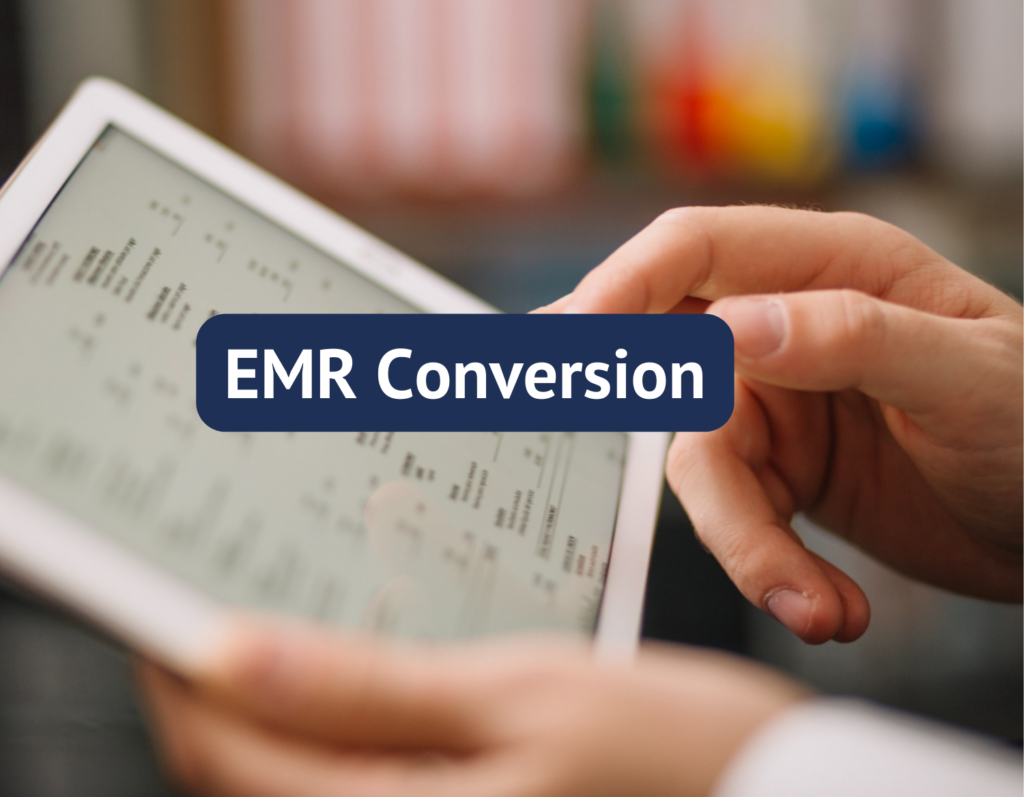
What Is EMR Conversion?
It’s simple to assume that the majority of healthcare professionals have chosen the best EMR solution for their practice, given that over 85% of office-based physicians and over 96% of hospitals use EMR nowadays. However, this is not the case at all. The notion of true EMR conversion actually goes much further than merely switching between software programs. Learn what it takes to properly switch from one EMR solution to another.
The electronic medical record is still a relatively new invention, despite being widely used in the modern American healthcare system. Hospitals and medical professionals have been intensely focused on completing the transition from paper to electronic medical records in just the last few decades. Many companies and organizations are already recognizing the urgent need to switch over to a new system for their electronic medical records (EMRs), that is more conducive to their needs.
EMR conversion is converting paper patient medical records into electronic health records. EMR conversion involves patient data migration from paper health records to a single enterprise-wide electronic health record (EHR) system.
What are the benefits of EMR conversion?
EMR conversion has numerous benefits for both healthcare organizations and patients. For patients, EMR conversion and digitization of patient health record leads to the following:
- Fewer mistakes in medical records
- Improved healthcare
- Ability to access medical information from anywhere
- Ability to monitor serious illnesses over time.
For healthcare organizations, EMR conversion offers a lot of benefits :
- Efficient Patient Document Management: Clinics can organize patient documents easily and create a searchable database.
- Optimize healthcare workflows: EMR keeps real-time track of patients, which helps healthcare workflows be optimized.
- Improve patient data: EMR can link data from multiple sources, thus improving patient data quality.
Factors to Consider for EMR Conversion
- What data from your current electronic medical records you are going to convert
- Equipment
- 3rd party vendors
- Budget
- Data quality and data validation
Need for EMR Conversion: Why Healthcare Organizations Migrate Between EMR Software?
We can now investigate why healthcare groups and organizations are moving towards developing new EMR systems now that we have defined an EMR conversion definition. Why not continue with the original version or platform given the size of a typical conversion process and the high cost of EMR systems? Actually, there are various causes for why new EMR use is spreading across the country:
- The current EMR contract is coming to an end, and there are other choices to consider.
- The support for the current software has expired.
- Users cannot comply with new laws, programs, or models with the capabilities provided by the current EMR vendor.
- There are no or ineffective critical adaptations for patient care delivery.
- It is impossible to integrate EMR with other critical technologies
- Managers, users, and patients are concerned about security breaches and the absence of necessary safety enhancements.
- When using the platform, physicians encounter productivity and workflow problems that the vendor is unable to address.
